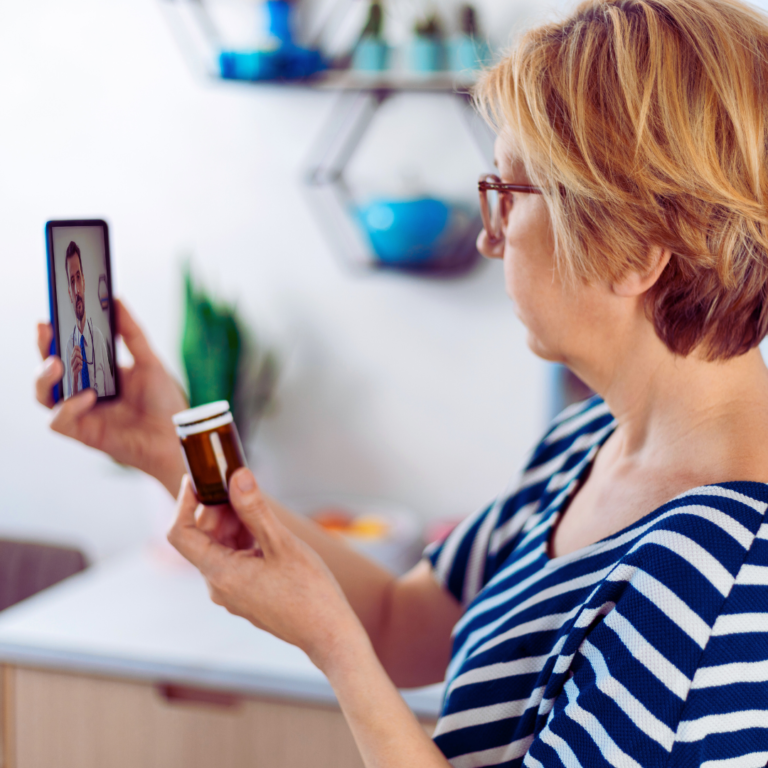Telemedicine has transformed the way healthcare is delivered, offering a convenient and efficient alternative to traditional in-person visits. The adoption of telemedicine has surged in recent years, presenting numerous benefits such as increased access to care, reduced travel time, and improved patient outcomes. This technology enables healthcare professionals to connect with patients remotely, ensuring that individuals can receive timely medical consultations from the comfort of their homes.
The growing acceptance of telemedicine reflects a shift in the healthcare landscape, driven by advancements in technology and changing patient preferences. Remote consultations can significantly alleviate the pressure on healthcare facilities while providing vital services to those in underserved areas. This blog post will explore the various dimensions of telemedicine, highlighting its implications for both patients and practitioners alike.
As telemedicine continues to evolve, understanding its impact and potential can empower individuals to make informed decisions about their healthcare options. With its promise of accessibility and efficiency, it is becoming an integral part of the modern healthcare experience.
The Evolution and Importance of Telemedicine
Telemedicine has undergone significant transformations over the years, shaping the landscape of healthcare delivery. Its evolution reflects advancements in technology and changing healthcare needs, with a notable acceleration in adoption and innovation.
Historical Perspective
Telemedicine’s origins can be traced back to the 1960s when it began as simple audio and video communications between patients and healthcare providers. Early implementations included using telephone lines to transmit medical information. As technology advanced, the integration of computers and the Internet expanded telemedicine’s capabilities, allowing for remote diagnostics and monitoring. By the 1990s, several health systems began establishing dedicated telehealth programmes, acknowledging the necessity for accessible care in rural areas. This historical foundation set the stage for the widespread acceptance of telemedicine as crucial for efficient healthcare delivery.
Telemedicine during Covid-19
The Covid-19 pandemic served as a catalyst for the rapid adoption of telemedicine. With restrictions on in-person visits, healthcare providers turned to virtual consultations to ensure continuity of care. Key statistics show that telehealth visits increased significantly, with some reports indicating a 10-fold rise in usage during the pandemic. This shift not only facilitated safe access to medical services but also highlighted telemedicine’s potential to reach diverse populations, including those previously hesitant to adopt technology-based care. The urgency created by the pandemic prompted regulatory changes that streamlined telemedicine practices, paving the way for lasting integrations into healthcare systems.
Current State and Future Prospects
Today, telemedicine continues to evolve, with a focus on enhancing patient experience and outcomes. Telehealth technologies now encompass a range of services, including remote monitoring of chronic conditions and mental health support.
The market is projected to grow as stakeholders embrace telemedicine’s convenience and efficiency. Key drivers include:
- Increased smartphone usage
- Growing demand for accessible healthcare
- Ongoing support from healthcare policies
As telemedicine becomes a standard practice, its potential to improve healthcare delivery and reduce costs is becoming increasingly evident. With innovations on the horizon, such as AI and advanced data analytics, telemedicine is poised for substantial growth and transformation in the coming years.
Implementing Telehealth Services
Implementing telehealth services involves several critical elements, including the necessary technology, training for healthcare professionals, and effective integration into existing healthcare systems. Each aspect plays a pivotal role in establishing a successful telehealth programme.
Essential Technology and Infrastructure
A robust technology infrastructure is foundational for telehealth services. Key components include:
- Video Conferencing Tools: Secure platforms that enable real-time consultations.
- Electronic Health Records (EHR): Systems that allow for easy access and sharing of patient information between providers.
- Remote Monitoring Devices: Equipment such as wearables or sensors that collect patient data for ongoing evaluation.
Ensuring data privacy and regulatory compliance is vital. This can be achieved by implementing secure communication channels and adhering to local healthcare regulations, such as the GDPR in the UK. Investing in reliable technology is crucial to facilitate seamless connection and interaction between patients and healthcare professionals.
Training Healthcare Professionals
Training is essential for healthcare professionals to effectively utilise telehealth services. This training should cover:
- Technical Skills: Familiarity with telemedicine software and troubleshooting common issues.
- Communication Techniques: Adapting interaction styles for virtual environments to enhance patient engagement.
- Clinical Protocols: Understanding telehealth-specific guidelines for diagnostics and treatment.
Organising workshops, online courses, and hands-on training can help upskill professionals. This preparation ensures healthcare teams are confident and competent in delivering care through telehealth channels.
Integrating with Existing Healthcare Services
Successful telehealth implementation requires integration with current healthcare services. Important steps include:
- Assessing Existing Systems: Evaluating current workflows to identify how telehealth can enhance patient care.
- Collaborating with Stakeholders: Engaging with healthcare providers, administrators, and IT teams to ensure alignment and support.
- Patient Education: Informing patients about telehealth options, benefits, and how to access services.
Integration should focus on maintaining quality care while enhancing access and efficiency. By thoughtfully merging telehealth with existing services, healthcare providers can improve patient outcomes and expand their reach.
Access to Care and Patient Outcomes
Telemedicine significantly enhances access to healthcare services, particularly for individuals in remote or underserved areas. It facilitates the management of chronic diseases and supports the monitoring of patient health outcomes. These elements collectively contribute to improved care quality and health equity.
Facilitating Remote Access to Care
Telemedicine offers convenient access to healthcare for individuals living in rural regions. Patients can connect with medical professionals from their homes, reducing the need for travel. This is especially beneficial for those with limited transport options or mobility challenges.
Virtual consultations can also lead to quicker appointments. Patients experience shorter wait times, allowing them to receive timely care. This can be crucial for early diagnosis and treatment, ultimately impacting overall health positively.
The integration of telemedicine reduces the burden on healthcare facilities. It enables providers to serve a larger patient base without overwhelming in-person services. Accessibility is enhanced, contributing to a more inclusive healthcare system.
Managing Chronic Diseases
Chronic disease management has seen substantial improvements through telemedicine. Regular virtual check-ins with healthcare providers help monitor conditions like diabetes and hypertension. This ongoing oversight can lead to more effective treatment plans tailored to individual patient needs.
Patients benefit from remote monitoring tools that track vital signs and symptoms. This data can be shared with healthcare professionals, enabling timely adjustments to medication and lifestyle recommendations. Such proactive approaches can enhance patient engagement and adherence to treatment protocols.
Telemedicine also facilitates educational resources for patients. Access to information about disease management empowers individuals to take control of their health. Knowledgeable patients are likely to make informed decisions, which can lead to better health outcomes.
Monitoring and Improving Health Outcomes
The ability to monitor health outcomes is a standout feature of telemedicine. Continuous data collection allows for an in-depth understanding of patient progress. Healthcare providers can identify trends and address issues as they arise, improving overall care quality.
Telemedicine platforms often include integrated tools for tracking health metrics. Patients can receive real-time feedback, enhancing their understanding of their condition. This interaction fosters a sense of accountability, motivating patients to adhere to their treatment plans.
Enhanced communication between patients and providers is critical. Telemedicine enables regular updates and follow-ups, which can lead to improved satisfaction and health results. Regular contact between patients and care teams establishes a supportive relationship, essential for successful healthcare delivery.
Challenges and Considerations in Telemedicine
Telemedicine presents various challenges that stakeholders must navigate, including regulatory frameworks, privacy concerns, and technological obstacles. Addressing these issues is essential for the successful implementation and acceptance of telehealth services among patients and healthcare professionals alike.
Regulatory and Privacy Issues
Regulatory challenges include differing laws across regions regarding the provision of telemedicine services. These laws can affect licensing, reimbursement, and the practice of medicine itself. Each jurisdiction often has different requirements, leading to confusion for providers operating in multiple areas.
Privacy is another critical concern. Patients must trust that their medical information is secure. Strict compliance with regulations such as the General Data Protection Regulation (GDPR) in the UK is necessary to protect sensitive data. Failures in data security can lead to breaches, compromising patient privacy and trust.
Technological and Human Barriers
Technological barriers can hinder access to telemedicine, especially in rural or underserved areas. Poor internet connectivity can limit patients’ ability to participate in remote consultations. Additionally, not all patients are familiar with technology, which can create reluctance to engage with telehealth services.
Human barriers also play a significant role. Some individuals may feel uncomfortable discussing health issues via video calls. The lack of physical interaction can lead to concerns about the quality of care. Trust and familiarity with healthcare providers are crucial for acceptance, impacting the overall efficacy of telemedicine.
Strategies for Enhancing Trust and Acceptance
To enhance trust, stakeholders should prioritise transparency about data usage and privacy measures. Clear communication regarding how personal information will be handled can alleviate patient concerns. Involving patients in the design of telehealth services can also foster a sense of ownership and empowerment.
Training healthcare providers to use telemedicine tools effectively can improve the patient experience. Demonstrating competence in technology can reassure patients about the quality of care received. Additionally, outreach programs that educate communities about telemedicine advantages can promote broader acceptance, especially among sceptical populations.




